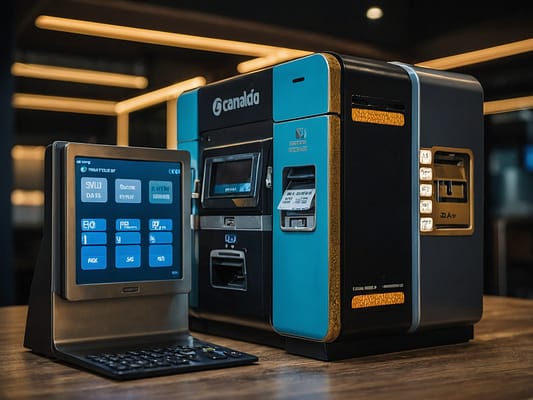5 Tips for Successful Negotiations with Overseas Suppliers
Negotiating with overseas suppliers is a critical skill for businesses engaged in international trade. The ability to secure favorable terms while cultivating long-term relationships can have a massive impact on your success. However, the complexities of cultural differences, time zones, and language barriers can make these negotiations challenging. Here’s a comprehensive guide to mastering the art of negotiating with overseas suppliers.
1. Do Your Research
Thorough research is the cornerstone of successful negotiations. Understanding the supplier’s market, cultural norms, and business practices will give you a significant edge.
- Market Insight: Research pricing trends, competitors, and economic conditions in the supplier’s country.
- Cultural Awareness: Recognize the cultural nuances that influence business practices. For instance, some cultures prioritize relationship-building, while others emphasize direct, competitive approaches.
Bonus Tip: Learn about the supplier’s capacity and limitations to avoid unrealistic expectations.
2. Establish Clear Communication
Communication is paramount when negotiating with international partners. Misunderstandings can derail negotiations and result in costly mistakes.
- Simplify Your Language: Use straightforward and clear language to avoid confusion. Steer clear of idioms or complex expressions.
- Confirm Understanding: Regularly recap and summarize key points to ensure alignment.
- Leverage Technology: Utilize translation apps or professional interpreters, especially if language differences are significant. Video conferencing is also useful for building rapport.
Bonus Tip: Schedule regular check-ins to keep communication lines open throughout the negotiation process.
3. Build Strong Relationships
Long-term partnerships are often built on trust and mutual respect. By investing in relationships, you can ensure a smoother negotiation process and better outcomes.
- Establish Trust: Take the time to understand your supplier’s goals and challenges.
- Personal Visits: If possible, visit the supplier’s facilities. Face-to-face interactions are essential for building trust.
- Celebrate Achievements: Recognize small wins like timely deliveries or consistent quality to foster goodwill.
Bonus Tip: Strong relationships often lead to better payment terms, flexibility, and priority during busy periods.
4. Negotiate Beyond Price
Price is just one factor in a successful negotiation. Consider all aspects that influence the partnership and the potential for long-term success.
- Delivery Terms: Agree on realistic lead times and shipping methods, as well as contingency plans for delays.
- Quality Standards: Establish clear expectations regarding quality and include service-level agreements (SLAs) for accountability.
- Payment Terms: Explore options like extended payment terms, bulk order discounts, or flexible schedules.
Bonus Tip: A holistic approach reduces risks and creates a mutually beneficial agreement.
5. Be Prepared to Walk Away
Negotiating is about finding a win-win outcome. If your supplier is not meeting your critical needs or is unwilling to be flexible, be ready to walk away.
- Know Your Limits: Have a clear understanding of your non-negotiables before entering negotiations.
- Back-Up Plan: Identify alternative suppliers who may be able to meet your needs.
Bonus Tip: Walking away gives you leverage and shows that you value fair, transparent negotiations.






Negotiating with Overseas Suppliers
1. What’s the most important thing to prepare before negotiating? Research is key. Understand the supplier’s market, pricing trends, cultural practices, and business capabilities to ensure informed decision-making.
2. How can I overcome language barriers during negotiations? Use translation tools, professional interpreters, or hire multilingual staff to ensure clear communication. Avoid idioms and complex phrases.
3. How do I build trust with overseas suppliers? Invest time in relationship-building. Visit their facilities, understand their business goals, and celebrate small wins to foster goodwill.
4. Should I always prioritize price in negotiations? No. While price is important, factors like quality, delivery terms, and payment flexibility often have a greater long-term impact on your business.
5. What should I do if a supplier refuses to meet my terms? Be prepared to walk away if your non-negotiables aren’t met. Having alternative suppliers as a backup ensures you’re not reliant on a single option.
6. Are face-to-face meetings necessary in today’s digital world? While not mandatory, face-to-face meetings (or virtual video calls) build stronger relationships and demonstrate commitment to the partnership.
7. What tools can help streamline negotiations with overseas suppliers? Tools like CRM software, translation apps, and platforms for supplier management can make communication and tracking easier.
8. How do I ensure quality control in an overseas partnership? Draft a detailed SLA (Service-Level Agreement) and conduct regular audits or inspections to maintain quality standards.
9. What risks should I consider when working with overseas suppliers? Geopolitical issues, currency exchange fluctuations, shipping delays, and regulatory changes are common risks to account for.
10. How often should I revisit the terms of a supplier agreement? Revisit agreements annually or whenever significant changes occur in the market or your business needs.
Mastering negotiations with overseas suppliers requires a mix of preparation, cultural sensitivity, and strategic communication. By doing your research, establishing clear communication, building relationships, and thinking beyond price, you’ll be able to navigate international trade successfully. Remember: the goal isn’t just about getting the best deal—it’s about fostering partnerships that benefit both parties in the long run.



